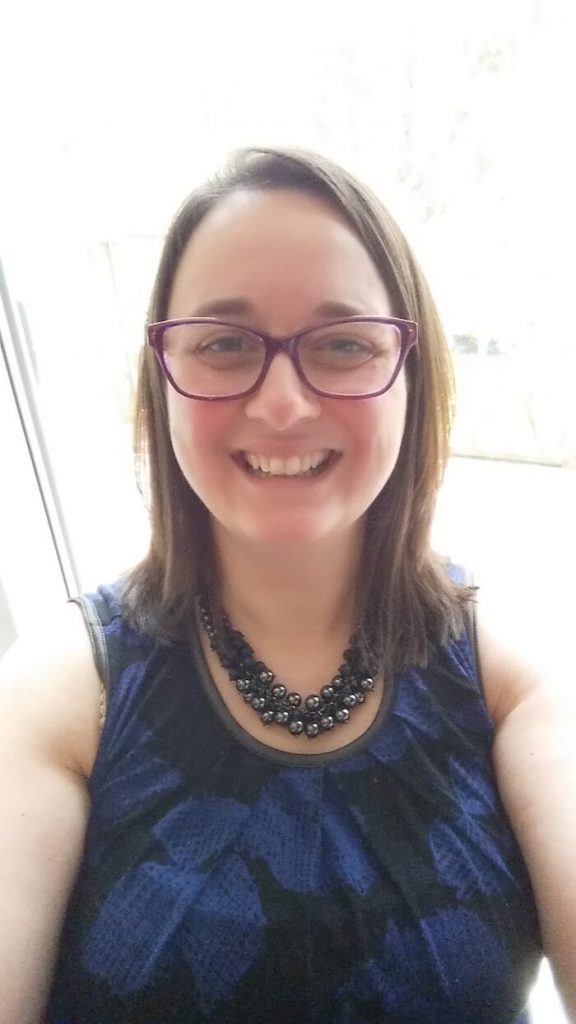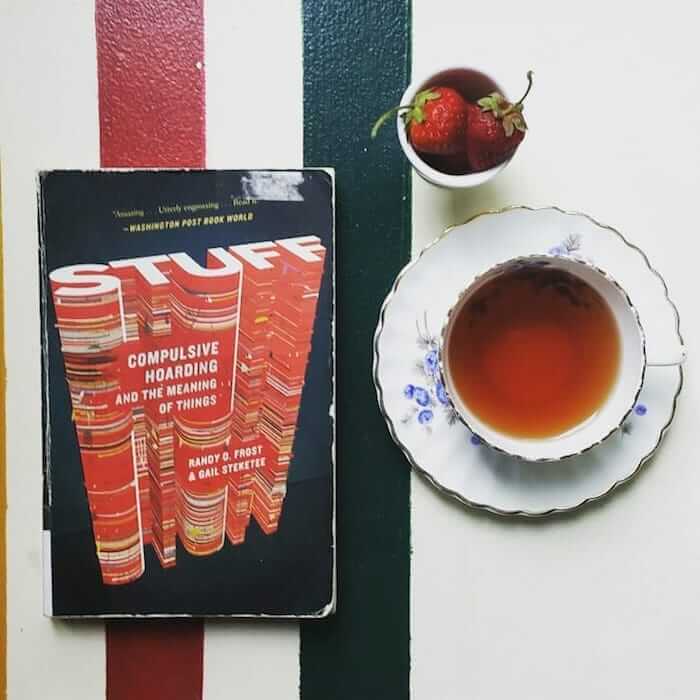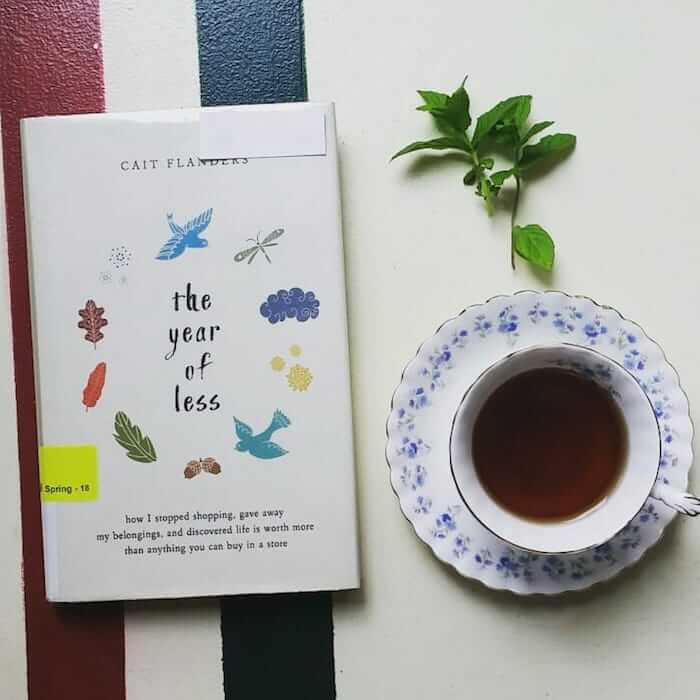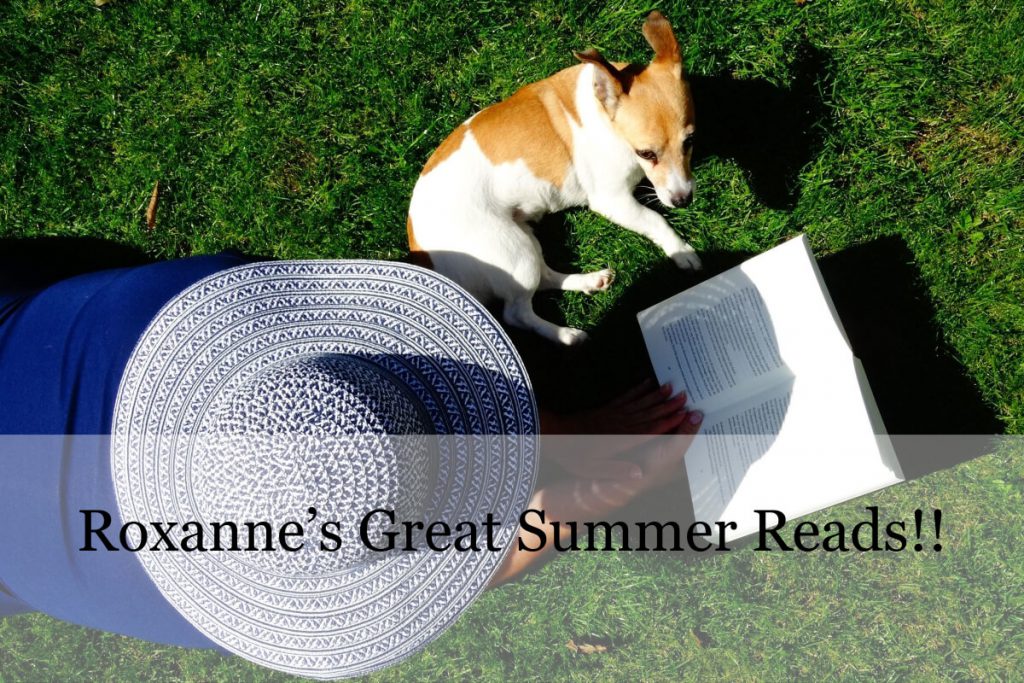Hi! I’m Roxanne, avid reader, Star Wars fan, blogger and former staff member with Heart of the Matter. I’m also wife to a pretty incredible guy, and mom to two pretty amazing kids.

In my pre-kids years, I worked for Donna and Rhonda, in the earlier years of HOM; I enjoyed those years working with them and the rest of the women on the team. I learned a lot from that job and got to explore one of my passions which is organizing!! It’s still one of my favourite things to do (one year, on my birthday, I celebrated by going through my linens and towels closets…and enjoyed every minute of it as my birthday gift to myself!!!).
One of my all-time favourite things to do is read! My reading lifestyle began as a child when I spent as much time as I could with a book in my hands! Not much has changed, and I do read almost anything and everything that I can. My blogging journey began after a friend suggested the idea of starting a blog where I could write about books! I jumped at the chance to share my thoughts about the books I was reading and to talk about bookish topics!! My blog is entitled “Red 5’s Book Nook” (Red 5 is a Star Wars reference) and you can check it out here. I started my blog almost four years ago and I’ve enjoyed it immensely. I’ve also recently joined the world of Instagram and you can find me here.
Last year I read two books dealing with decluttering/hoarding/organizing etc. Both books were quite different in terms of content, but both spoke to me and were SO interesting. So, here’s what they’re all about.
The first book I’m going to share with you is called Stuff: Compulsive Hoarding and the Meaning of Things by Randy O. Frost and Gail Steketee.

Here’s the link to my original (and brief) review of Stuff. Below I have gone into greater detail 🙂
I found this to be such a fascinating book!!! It’s full of case studies from a decade of research by Frost and Steketee, who became the first scientists to study hoarding. One of the questions that the authors try to answer is, what happens when our stuff starts to own us? And, the authors also look at the “pull” that our possessions can exert on all of us. Why do we keep the things that we do? The main topic is hoarding and the different examples of situations that the researchers had found.
They also write about what they discovered in terms of their research. From hoarding items we would view as actual garbage, to hoarding paper, or collecting animals (ie a client who had rescued/collected hundreds of cats)…it seems as if the authors have seen it all!! For most of the clients, emotional attachment (p 21) is placed upon the items that are hoarded, which makes it even more difficult for the individual to think of getting rid of it…why would they throw something out that is special to them (even if it might be an outdated and obsolete item)?
For some people who hoard there were connections to each individual item they had collected/hoarded; whether or not it made sense to an outsider, these items were very important to the individual. And it seemed, for one client, that equal value was placed on items, such as an old newspaper compared to a photo of her daughter. There also were found correlations between possessions and security (p 87). The more items a person had, the more protected and safe they felt. I really loved reading about one of the clients who finally experiences and understands in her mindset what she’s living in, and she can start making changes (p 166).
Hoarding can be a very tricky area in which to make any progress (for the hoarder), which leads it to becoming a very frustrating experience/outcome for the professionals who are trying to help them. There are a lot of mental blocks that can contribute to hoarding, and Frost and Steketee found it very difficult for the hoarding behaviour to change in their clients. This challenge led them to develop a treatment program specifically for hoarders, based on what they learned through their research and experience (p 271). Part of the last chapter of the book is devoted to some help and resources for those who struggle with hoarding. It might be a good idea in hoarding situations, or if you know someone who hoards, to seek the help of professionals.
Even though this book was a re-read for me, I still found it to be so interesting, yet I felt some discomfort in reading about the conditions in which some of the clients lived. I have been in homes of hoarders with my HOM team mates, and it’s definitely not a pretty picture. So I could certainly relate to some of the stories about the researchers and their teams walking into those homes and finding almost unlivable conditions. It takes a lot of knowledge and patience to work in situations like this.
The second book I’m going to look at is entitled The Year of Less by Cait Flanders.

Here’s the link to my original (and brief) review of The Year of Less. Below I have gone into a little extra detail 🙂
This one is about the author and her twelve-month Shopping Ban experiment. She created a list of rules for what she was and wasn’t allowed to purchase during this experiment. Things like groceries, cleaning supplies, and gifts for others were items she was allowed to buy, as well as items on her approved shopping list (an outfit for multiple weddings, a pair of boots, replace her bed, and anything that must be replaced but then the original item needs to be discarded). Some of the items she wasn’t allowed to buy included take-out coffee, clothes, shoes, accessories, books, magazines, household items (candles, décor, furniture) and electronics. Seems like an insurmountable list, eh? And, how could a person live on purchasing so few items within a year?
Flanders made her decision after thinking “I should get rid of some stuff” numerous times and not doing anything about it, or thinking she’ll do it “one day” (p 4). She eventually came to the realization that she didn’t need or use most of the stuff that she owned (p 4), and that she had kept things “just in case” (p 14) as a lot of us are prone to do. So, she started going through her home and being really honest with herself about her items: did she really intend to wear these clothes, even though they aren’t her style or don’t fit anymore? Does she really need her CD and DVDs even though she didn’t have devices on which to play those? Flanders kept track of all the items she was able to promote from her home. There was no purpose for this other than she was curious as to how much stuff she was letting go of (p 9). She talks about going through her clothes, CDs/DVDs, kitchen, office supplies, toiletries and books. The books section caught my attention as I love books, too! She shared she had a bad habit of buying more books than she could ever read. I was impressed with her decluttering her books and she was honest with herself about whether she was actually ever going to read them (p 10-11).
Throughout the book, Flanders talks about things in her past and how those events and choices she made led her to where she was presently. In the past she’d spend money and buy things so that she didn’t have to feel emotions. After three months in this experiement she realized she was feeling emotions! Yay! There were times when she definitely struggled with wanting to purchase things, but she kept herself accountable and got through it. There were things that came up in her personal life that completely devastated her which she talks about and shares how that impacted her during this year.
At the beginning of her year-long experiment, she asked herself these questions in her decluttering process: have I used this recently? And, do I plan to use this soon? Those two questions were enough for her to work with initially in terms of starting out and promoting the bulk of her belongings. I feel these are great questions to ask! Halfway through the year, when she realized she still had a lot of unread books, she came up with a different question: who are you buying this for? The person you are, or the person you want to be? She realized she should have asked herself this question before buying any of those books. Wow! What a realization!! She knew that she needed to let go of the stuff she wanted the ideal version of herself to use, and accept who she really was (p 118-119).
In the end, the Shopping Ban was initially about spending, but the best gift she received from the ban was attaining the tools to take control of her life and get a fresh start as her real self (p 164). The end of the book is the author’s “Your Guide to Less” to help you on your own journey of decluttering and self-discovery.
Both times that I’ve read this book, it has inspired me to go through areas in my home! Something that’s always fun for me! The author’s recognition halfway through the year of buying for the person she is or the person she wants to be really resonated with me. It’s given me a new question to keep in mind when I’m deciding on promoting or keeping items. What was the original intention for this item? And when it comes to books, despite reading a lot of books per year, I actually don’t buy many of those; I utilize the public library and only purchase books that I really love.
In terms of recommending these books, they’re both really great in their own way. Stuff I would recommend for those who work in a profession that deals with mental health or hoarding, or if you’re just interested in reading about hoarding. The Year of Less I’d recommend to those who are interested in decluttering their homes and trying to live with less. Both are excellent books and great resources; check your local library to see if you can borrow them (instead of purchasing!).
DON’T FORGET OUR CURRENT SPECIAL OFFER!!
$50 Virtual Organizing Session BUY ONE GET ONE FREE for a limited time only!!! Purchase your sessions NOW!
If you would benefit from some side by side help and encouragement then Heart of the Matter would love to be your success partners. Mention this blog and get 15% off your project!
If you’ve enjoyed this content, please consider forwarding it on to a friend or giving us a review on google. Caring is sharing, and we sincerely appreciate anytime you are able to share us with those you care about!
Follow us on: Facebook | Twitter | Pinterest | Instagram | Youtube |
Was this email forwarded to you? Subscribe here so you don’t miss the next one.Paragraph

